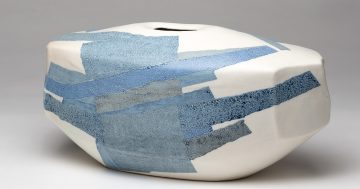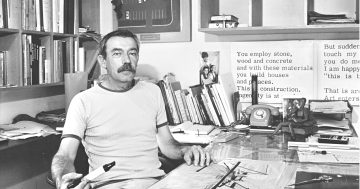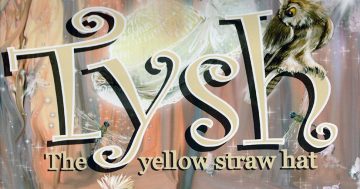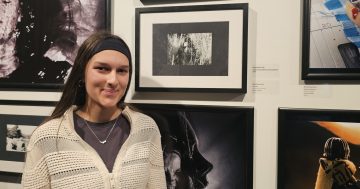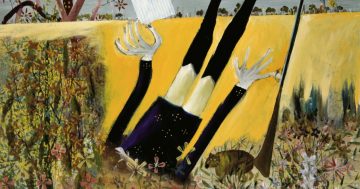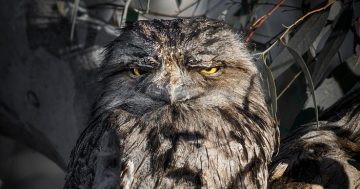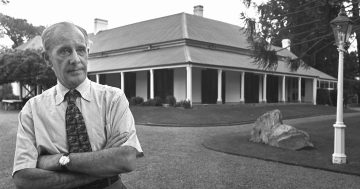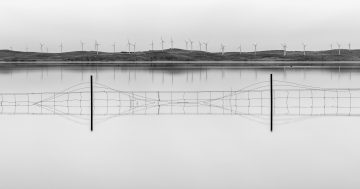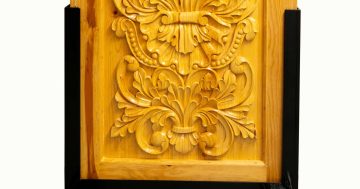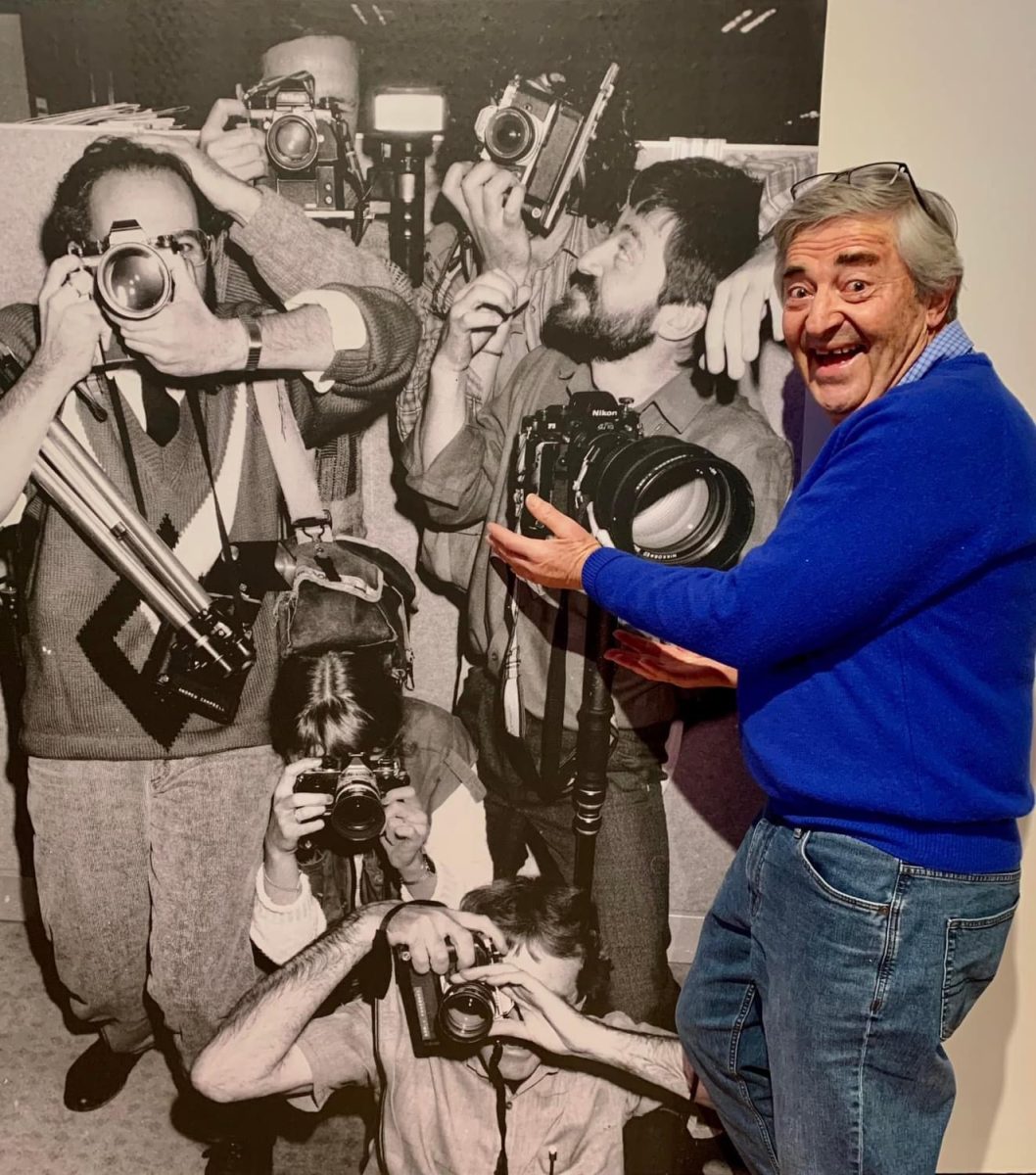
Veteran press photographer Graham Tidy at the opening of the CMAG exhibition, Capturing Canberra. He is standing in front of a picture of his younger bearded self and Canberra colleagues circa 1989. Photo: David Foote.
It was the Saturday after the 1997 Thredbo landslide. Locals, families and friends had taken a moment away from the rescue site, praying for their missing loved ones in the nearby church.
Graham Tidy, a Canberra Times press photographer, was shooting outside, not wanting to intrude. From the wall of windows outside, he captured the scene.
“I didn’t know it at the time,” Graham said, “but in that front row of mourners I photographed, were Stuart Diver’s mother and father. The next day, he was found alive.”
The photo made page 1 – an image the veteran, now retired press photographer, will never forget.
Some of Graham’s most memorable photographs, from his 27 years shooting in Canberra, are now on show at the Canberra Museum and Gallery (CMAG) in Capturing Canberra – CMAG’s Press Photography Collection. His images join those of other media colleagues, including Lorrie Graham, Rob Little, Mike Bowers and Rick Stevens, part of a collection of 3560 press photography images, acquired by CMAG in 2018, that span nearly a century of Canberra’s history.
The exhibition tells, pictorially, the story of how a small country town became the nation’s capital. From tragedies including the Thredbo landslide and Canberra Hospital implosion to the election of the capital’s first female chief minister and royal visits.
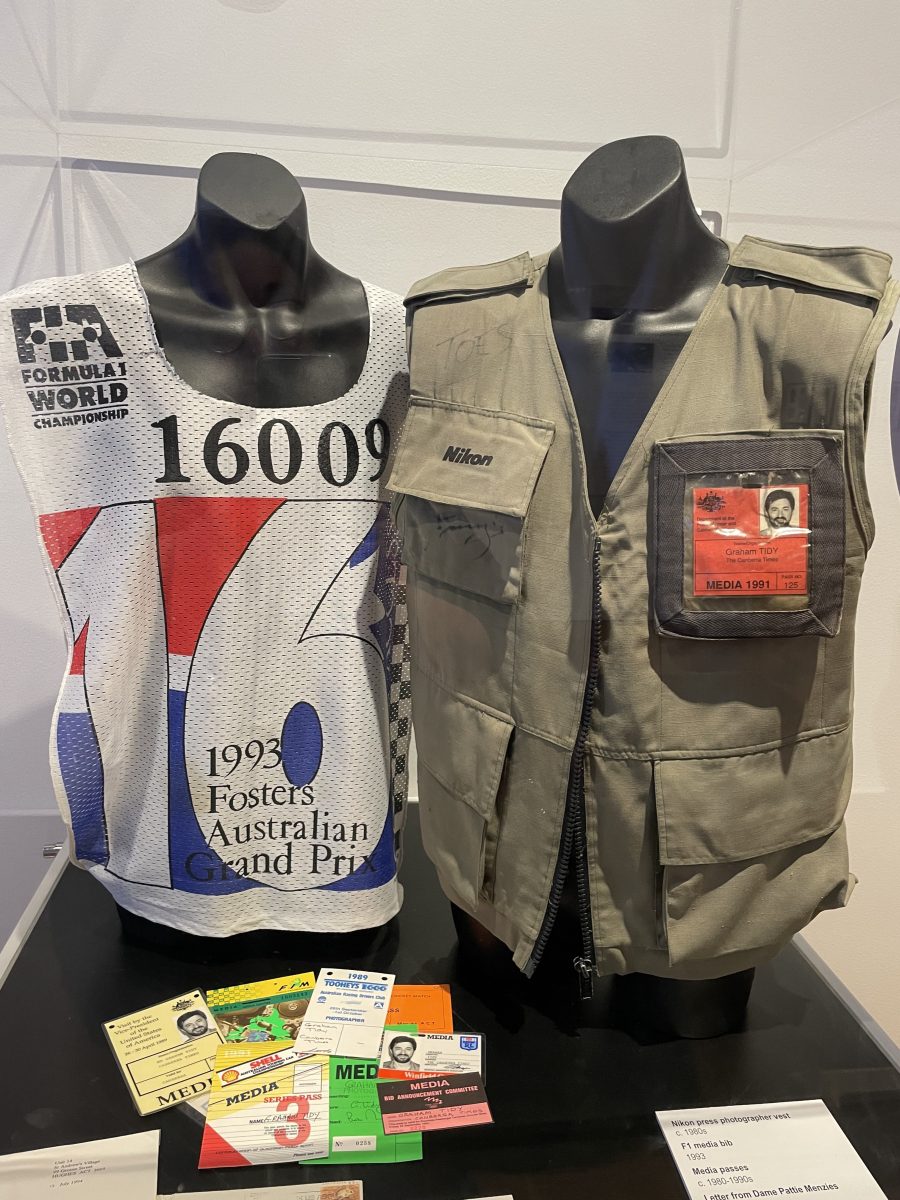
Press jackets and media passes used by Graham Tidy during his long career – on show at the CMA exhibition. Photo: Sally Hopman.
“I’ll never forget the hospital implosion,” Graham said. “It had been planned for weeks. We had photographers dotted around most parts of the lake to capture it all.”
But it went tragically wrong when a young girl was killed by a flying piece of debris.
“I had wanted to set up a scissor lift to get crowd shots from above but I’m glad that plan was curtailed … because that was where that little girl was killed,” he said.
Graham started his professional life as a cadet photographer on the Adelaide Advertiser in 1971. He accepted the job in Canberra in 1989, keen to be part of the capital’s growth.
“One of my first jobs was to shoot the ACT self-government election campaign,” he said. “It was also the year the Raiders won the grand final.
“That Raiders game was a bit of fun. I was shooting it at the old football stadium in Sydney so after the game I had to race into The Sydney Morning Herald offices to print the pictures and send them back to Canberra. You certainly couldn’t do anything online back then.”
What was Canberra like in those days? “I thought it was like a big country town,” he said. “Back in 1989 we had about eight photographers on staff and darkroom staff. The guys in the darkroom would mix up all the chemicals we needed for processing while we were out on the road.”
In the CMAG exhibition, curators have set up such a darkroom to show younger generations how it was done back then – complete with red lights warning people not to enter because any light shed while images were being developed would ruin the photos.
Graham has also lent some of the memorabilia he has collected from jobs over the years, including press passes and jackets that allowed him to get into otherwise restricted areas.
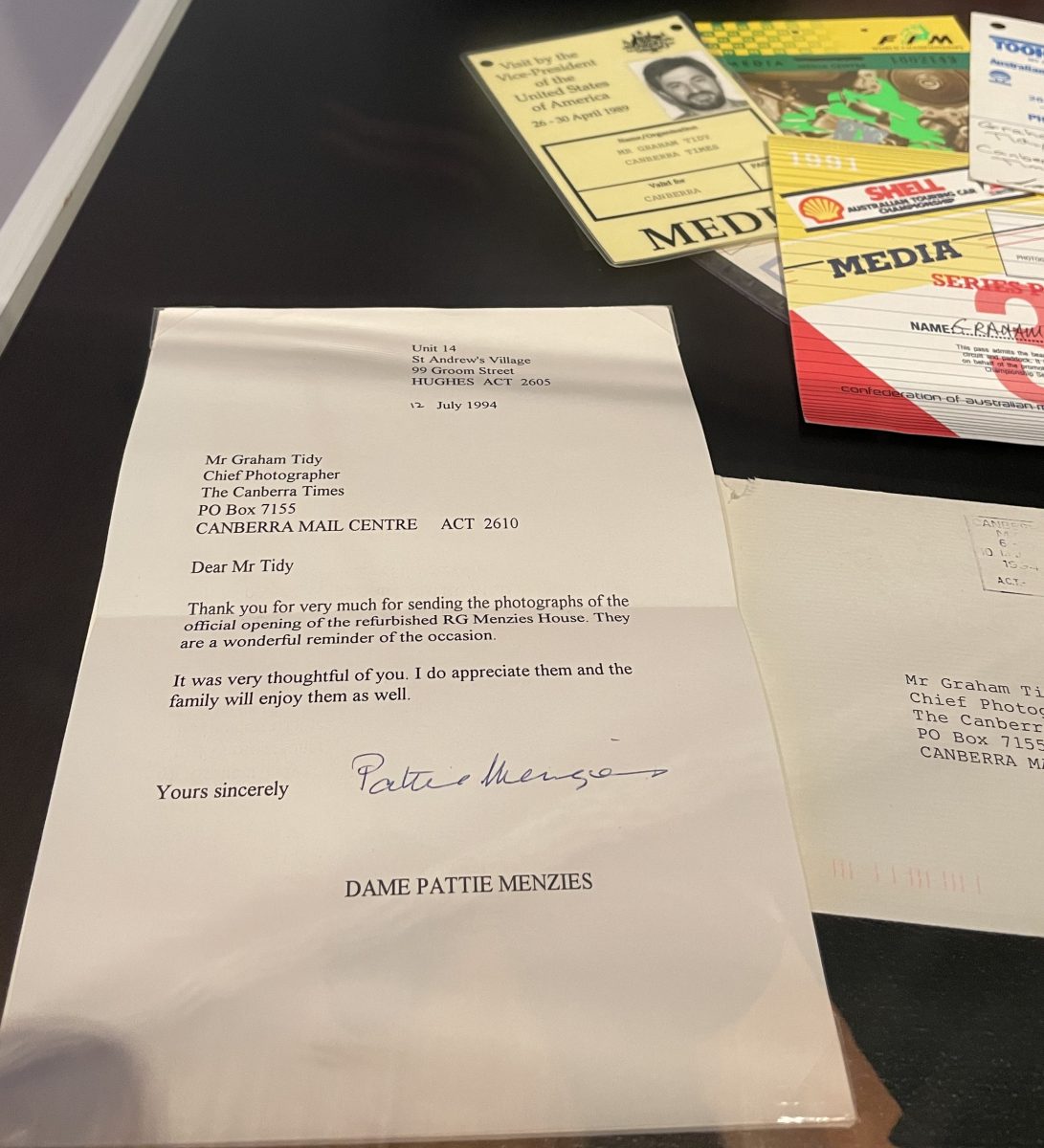
A thank you letter from Dame Pattie Menzies to Graham Tidy for photographs he sent her. Photo: Sally Hopman.
A keen motorsport fan, Graham said one of the highlights of his career was covering races and meeting some of the drivers. “In the old days, before all the security we have today, the drivers were often happy to have a chat. I remember going to the Grand Prix in Adelaide one year and I saw Lindy and Michael Chamberlain in pit lane. I asked Lindy if she’d sign my jacket – it’s a bit faded now but you can still see her signature.
“I’ve met some great people over the years. Michael Palin from Monty Python, he was great. He was in Canberra to promote his TV series so when I went out to the job I took a Monty Python poster with me.”
The poster celebrated the first date he had with his now wife Lou and yes, Palin signed it.
He also has right royal memories of his time in the job. He was at a “grip and grin” – where the VIP walks a little slower than usual so photographers can get their shots. In this case, the VIP was Queen Elizabeth II.
“I was a little nervous … it was the first time I’d seen the Queen and the Duke. We were in a room full of media and when she walked past me she said, ‘have you got it in focus?’.” He did.
Capturing Canberra is now on at the Canberra Museum and Gallery, open daily, until 24 January, 2024. Free exhibition.
Original Article published by Sally Hopman on Riotact.


